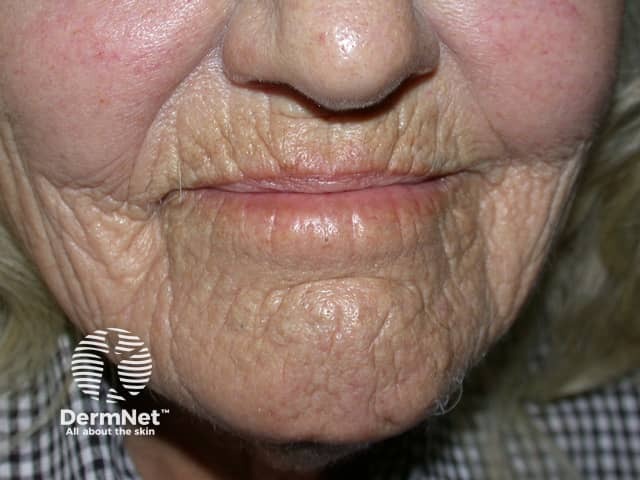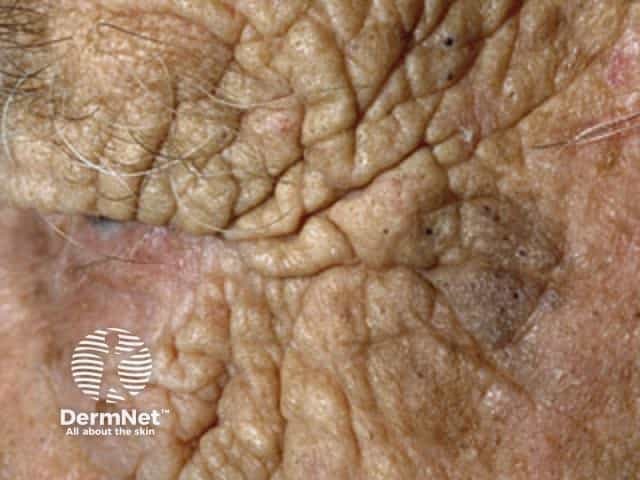Main menu
Common skin conditions

NEWS
Join DermNet PRO
Read more
Quick links
Author: Dr Jo-Yve Wong, Ulster Hospital, Northern Ireland (2022)
Previous contributors: Dr Beth Wright (2012)
Reviewing dermatologist: Dr Ian Coulson
Edited by the DermNet content department
Introduction Demographics Causes Clinical features Variation in skin types Complications Diagnosis Differential diagnoses Treatment Prevention Outcome
Solar elastosis is a disorder in which the skin appears yellow and thickened as a result of abnormal elastic tissue accumulation, due to chronic sun damage on ageing skin. Solar elastosis is also known as actinic elastosis and elastosis senilis.

Solar elastosis

Solar elastosis

Severe solar wrinkling and a basal cell carcinoma

Yellow lesions of solar elastosis on the nose

Solar elastosis on the upper lip mimicing lemon skin

Favre-Racouchot syndrome showing elastosis and solar comedones and cysts
Solar elastosis is a feature of photo-ageing. It affects males and females of all skin types who have had long-term sun exposure. Although it does not usually present until the fourth decade, cumulative ultraviolet (UV) radiation exposure is the most important risk factor.
See also: Smoking and its effects on the skin.
Although solar elastosis affects individuals of all skin types, its yellow hue is more noticeable in people with fairer skin. Those with fairer Fitzpatrick skin phototypes are also more susceptible to effects of sun damage and developing solar elastosis. One study noted an inverse relationship between degree of solar elastosis and degree of melanin pigmentation in the skin.
Chronic and prolonged exposure to ultraviolet (UV) radiation damages DNA and is a major contributor to development of skin cancer. Therefore, individuals with solar elastosis due to photodamage are also more likely to have other conditions associated with accumulated sun exposure such as:
Solar elastosis is diagnosed mainly from clinical appearance, and can be confirmed microscopically with skin biopsy.
As solar elastosis is mainly caused by prolonged UV radiation, the main aspect of treatment is to prevent further photodamage and premature skin ageing through sun protection and smoking cessation.
Other treatment options to improve the cosmetic appearance of elastotic skin include:
People with solar elastosis should minimise or avoid exposure to known precipitants.
There are several cosmetic treatment options available for solar elastosis.
As it is often caused by cumulative chronic exposure to solar ultraviolet (UV) radiation, there is an association with other conditions linked to sun damage, such as skin cancer. Regular skin checks are important, as well as prompt review of any new or changing skin lesions and sun protection to minimise further skin photodamage.